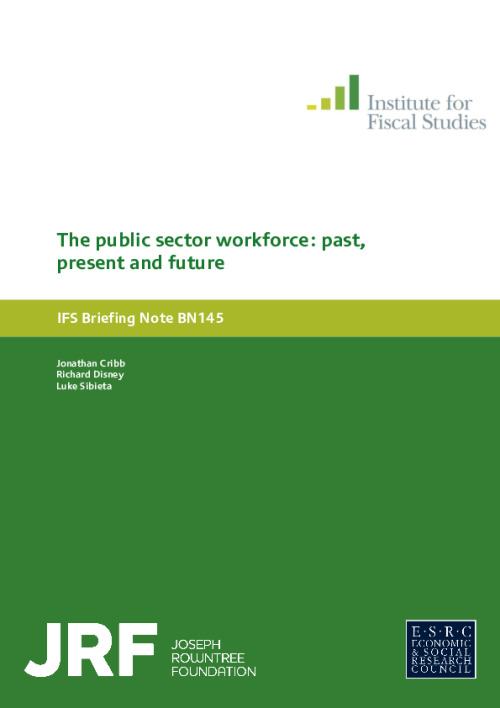As in all advanced economies, the public sector is a sizeable employer in the UK. At its most recent high-point in 2010, the public sector employed about 6.1 million workers, or 20% of all UK workers. The public sector pay bill also makes up a large element of public spending, accounting for well over half of current or day-to-day spending at the latest count. With the government in the process of making significant cuts in departmental spending as part of a fiscal consolidation aimed at helping to bring the public finances back on to a sustainable path, cuts to the total pay bill and workforce are essentially unavoidable. Indeed, the OBR forecast is that the level of general government employment will fall by 1.1 million as a result of expected cuts to public spending between 2010–11 and 2018–19. With schools and NHS spending relatively protected from spending cuts, these workforce cuts are likely to be focused on other areas of spending, changing the shape of both public spending and the public workforce.
In this briefing note, we combine various data sources to provide for the first time a consistent picture on how the size and composition of the public sector workforce has changed over the past 50 years. This initial descriptive piece forms part of a larger project that will provide further detailed analysis of the differences in the remuneration packages of public and private sector workers, as well as the mobility of workers between sectors and different areas of the country.











